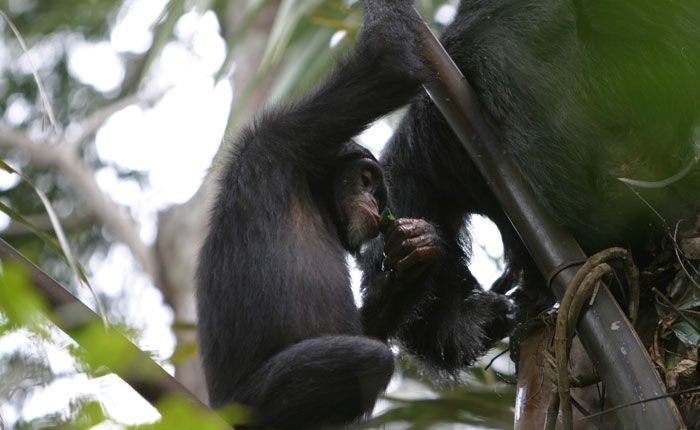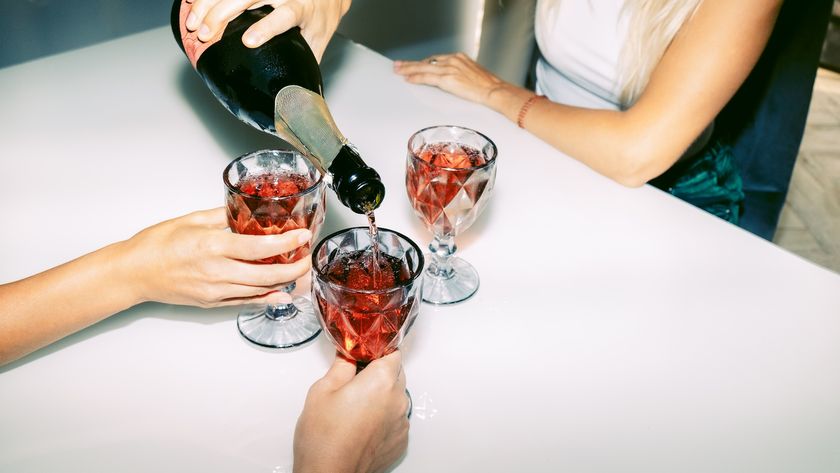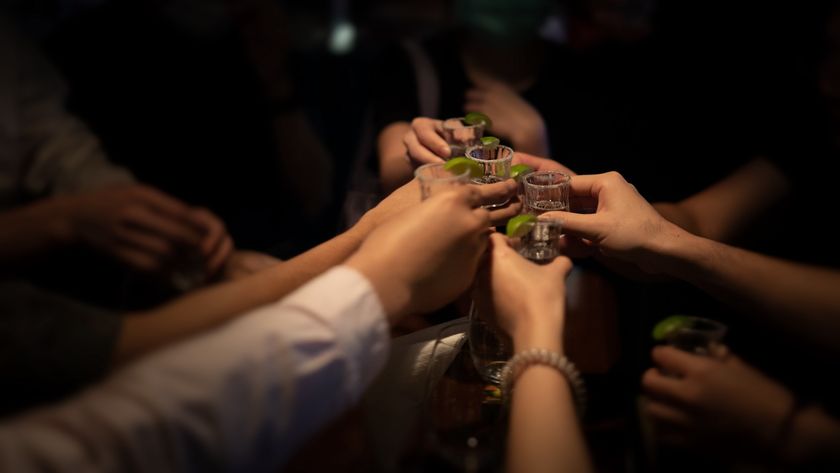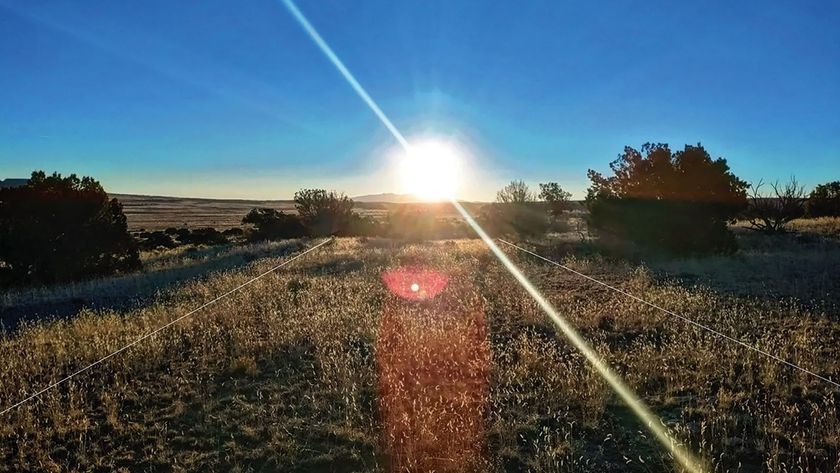Chimps Get Drunk on Palm Wine

Humans' closest living relatives may have a drinking habit: Scientists spied intoxicated wild chimps soaking up palm wine with leaves and squeezing it into their mouths.
Alcohol consumption is seen across nearly all modern human cultures that have access to fermentable materials. This prevalence led scientists to suggest what is known as the "Drunken Monkey Hypothesis" — that alcohol consumption might have provided a benefit of some kind to the ancestors of humanity, and perhaps also to the ancestors of chimpanzees, humanity's closest living relatives.
Humans and apes share a genetic mutation that emerged about 10 million years ago that helps them break down alcohol and could have helped them eat overripe and fermenting fruit. According to the proponents of the Drunken Monkey Hypothesis, the benefits of such an expanded diet may have even led evolution to favor an attraction to alcohol.
There were a few anecdotes of primates other than humans partaking in alcohol — for instance, green monkeys introduced to the island of St. Kitts like drinking tourist cocktails. However, most of these anecdotes were unconfirmed.
Now, researchers say they have confirmed, for the first time, that wild apes habitually drink alcohol. [Watch Wild Chimps Sucking Down Palm Wine (Video)]
The scientists watched wild chimpanzees living near the village of Bossou in the West African country of Guinea from 1995 to 2012. Villagers in Bossou tap raffia palm trees for the sap, harvesting it with plastic containers placed near the crowns of the tall palms. Villagers leave the containers alone for most of the day, collecting the palm sap in the early morning and late afternoon.
The sweet palm sap ferments quickly into palm wine. Villagers knew chimps occasionally sampled this sap for themselves, the researchers said.
Sign up for the Live Science daily newsletter now
Get the world’s most fascinating discoveries delivered straight to your inbox.
Chimps often fold or crumple leaves inside their mouths to produce a drinking tool. They dip these "leaf sponges" into their preferred drink, and then squeeze the leafy tools in their mouths.
The researchers saw 51 instances in which 13 chimps used leaf sponges to drink fermenting sap. "I was fascinated by this behavior," study lead author Kimberley Hockings, a behavioral ecologist at Oxford Brookes University in England, told Live Science."To harvest the palm wine, chimpanzees at Bossou use a leafy tool as a spongy drinking vessel."
The sap averaged about 3.1 to 6.9 percent alcohol, or 6.2 to 13.8 proof. For comparison, beer averages between 3 and 6 percent alcohol, and wine can contain 7 to 14 percent alcohol, with dessert wine having nearly 19 percent alcohol content, according to the University of Notre Dame. The chimps often drank the booze in large quantities — about a liter (34 ounces, or about three average-size beers) of fermented sap on average. Males accounted for 34 of the 51 instances of drinking — one adult male in particular accounted for 14 of the 51 instances.
"Chimpanzees at Bossou have applied their knowledge of how to make and use leafy tools to exploit a new liquid resource — palm wine," Hockings said. "This new use of elementary technology shows once again how clever and enterprising humankind's nearest living relations are."
A number of chimps appeared intoxicated. One time, Hockings noted the chimps rested immediately after drinking the palm wine; "on another occasion after drinking palm wine, one adult male chimpanzee seemed particularly restless and whilst other chimpanzees were making and settling into their night nests, he spent an additional hour moving from tree to tree in an agitated manner," she said.
Hockings noted these findings do not confirm the Drunken Monkey Hypothesis, since they cannot say for sure whether the chimpanzees were attracted to the alcohol. "However, our data clearly show that alcohol is not an absolute deterrent to chimpanzee feeding in this community," Hockings said.
Hockings suggested that a future experiment could be to give chimps access to both alcoholic and nonalcoholic palm sap, to see whether the apes are attracted to alcohol. She and her colleagues detail their findings online June 10 in the journal Open Science.
Follow Live Science@livescience, Facebook & Google+. Original article on Live Science.



